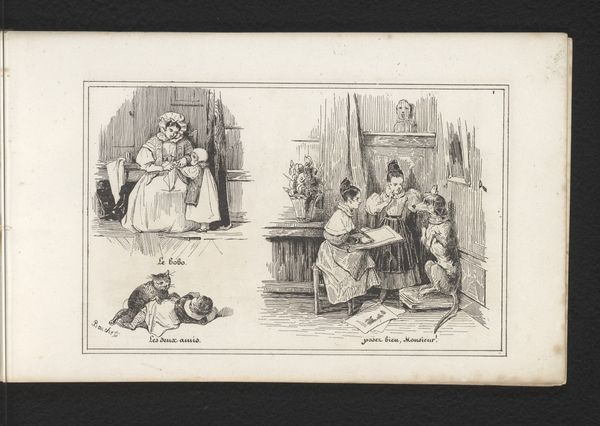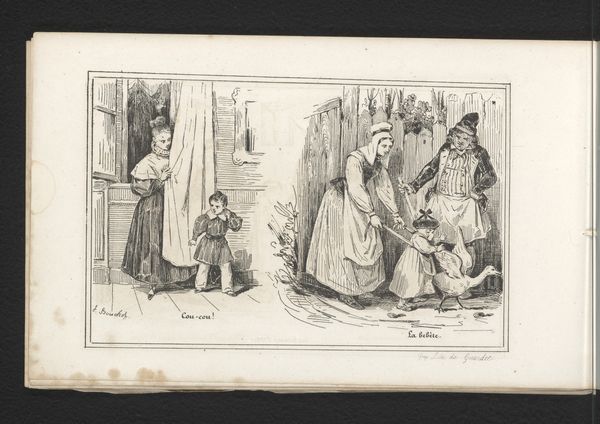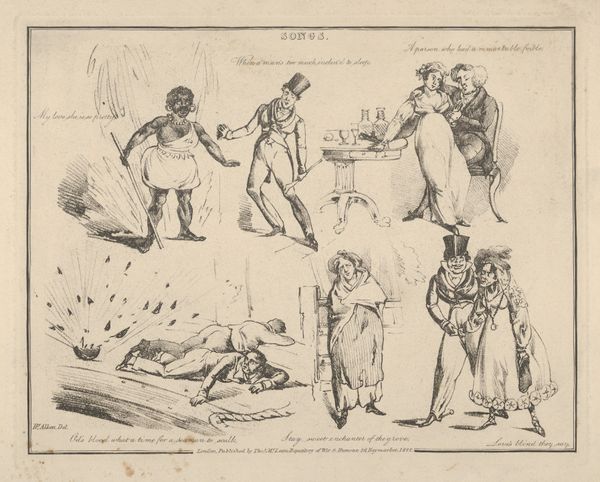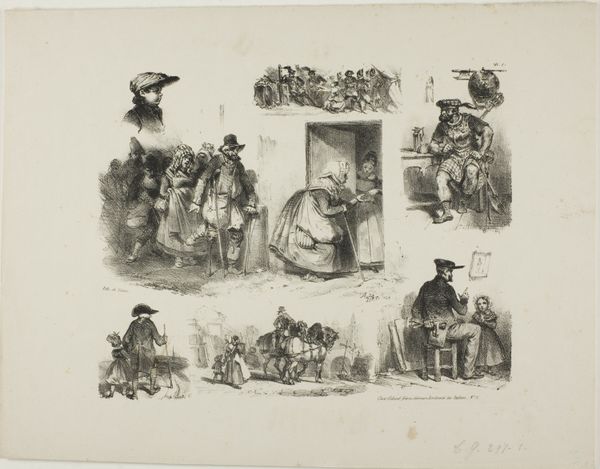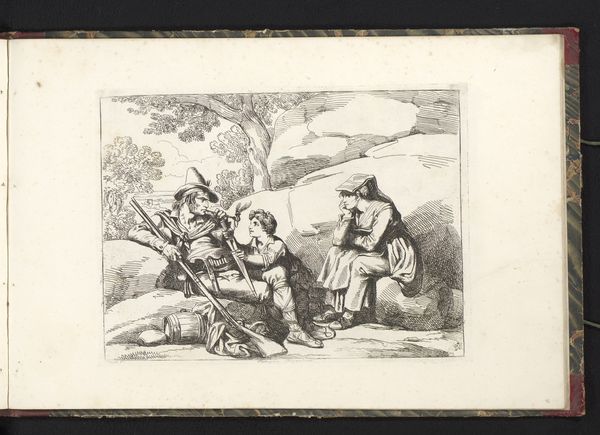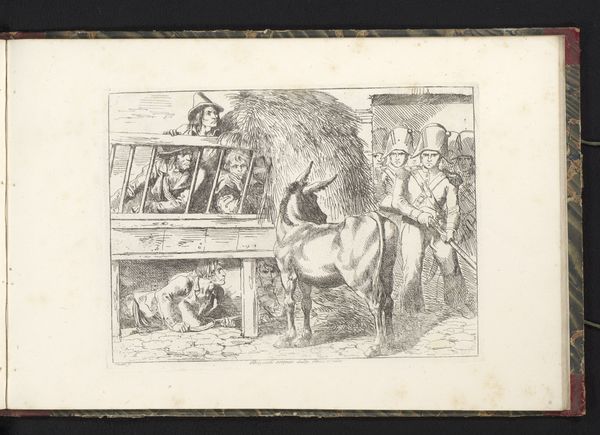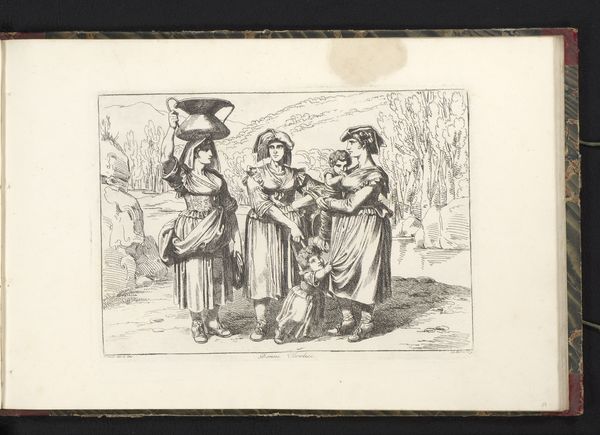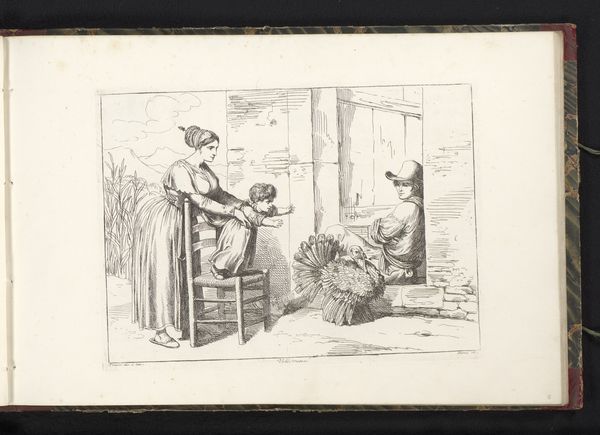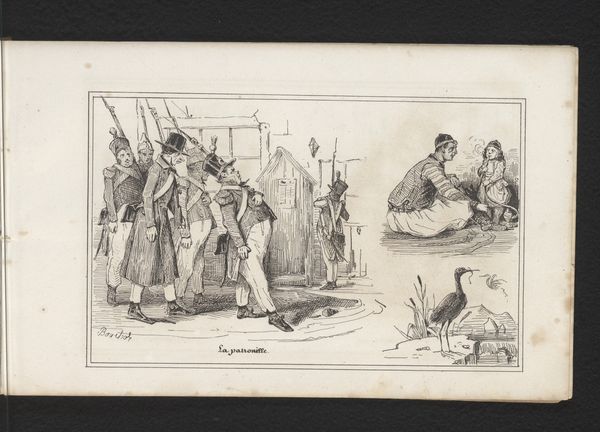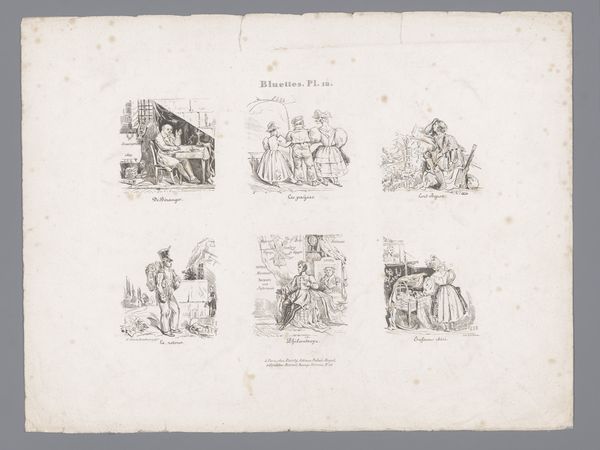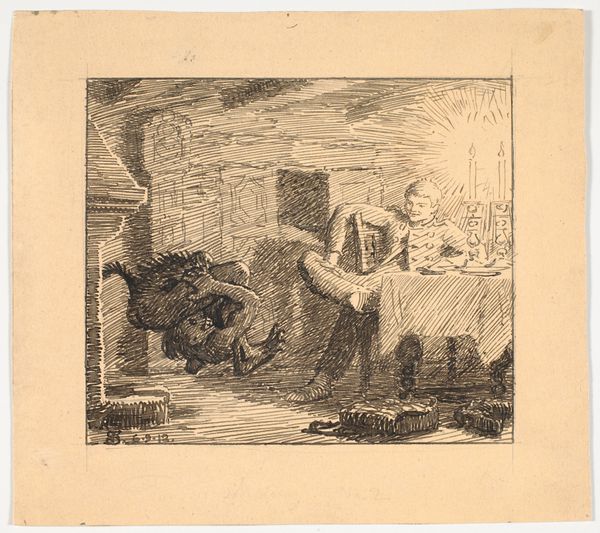
Kind dat zeepbellen blaast, twee mannen in Chinese klederdracht en twee eenden 1834
0:00
0:00
fredericbouchot
Rijksmuseum
drawing, ink, pen
#
drawing
#
aged paper
#
toned paper
#
narrative-art
#
sketch book
#
personal sketchbook
#
ink
#
folk-art
#
romanticism
#
pen-ink sketch
#
pen and pencil
#
pen work
#
sketchbook drawing
#
pen
#
genre-painting
#
storyboard and sketchbook work
#
sketchbook art
Dimensions: height 141 mm, width 232 mm
Copyright: Rijks Museum: Open Domain
Curator: This 1834 pen and ink drawing, “Kind dat zeepbellen blaast, twee mannen in Chinese klederdracht en twee eenden” by Frédéric Bouchot, immediately feels like a page torn from a whimsical travel journal, doesn’t it? A snippet of life, captured with a dash of romantic flair. Editor: Indeed. I'm struck by its intimacy, how these separate scenes, a child blowing bubbles, the men in "Chinese" dress, even the ducks, are presented almost as ethnographic vignettes, viewed through a decidedly European lens. The paper itself looks quite aged. Curator: You know, that aged paper whispers stories, doesn’t it? Makes me imagine Bouchot sketching furiously in a dimly lit atelier. And what about the men in what the title suggests are "Chinese" costumes? Is it an accurate portrayal or pure orientalist fantasy? I’d say the ducks give a sense of comic relief, as they echo a French farm in those romantic days! Editor: Absolutely. That's precisely where the historical and social context becomes so important. We have to unpack that “Chinese” attire – what did it signify to Bouchot and his audience? How does it reflect or distort the complex relationships between Europe and Asia at the time? It's quite possible this is a depiction seen through colonial eyes. Curator: Yes, a costume instead of clothing then... What a curious composition, a juxtaposition of the mundane and the exotic, creating a tiny universe on this sketchbook page. Editor: It highlights the power dynamics inherent in the act of observation, particularly from a Western perspective. Whose story gets told, and how? It reminds me of the performative role of clothing and identity within shifting power relations during colonial eras. The bubbles are symbolic. A Westerner might have thought "Asian men in silly costumes"... While an Asian artist might reflect about how their traditional robes were fading... It all can boil down to a colonial gaze of othering based on apparel. Curator: I appreciate that reading, giving each element new possibilities... So much captured in so few lines, on a single page! Editor: Indeed. It is an image that resonates beyond its simple lines, and continues to push us to look critically at representation and its consequences, as our world grows into something hopefully decolonized and fair to every human.
Comments
No comments
Be the first to comment and join the conversation on the ultimate creative platform.
